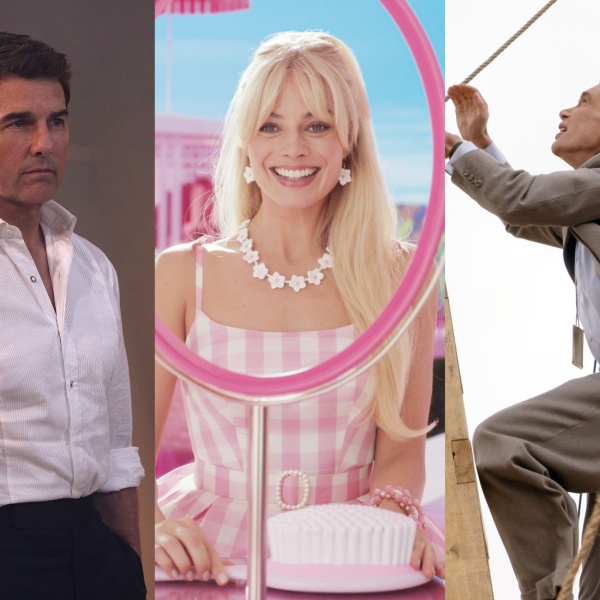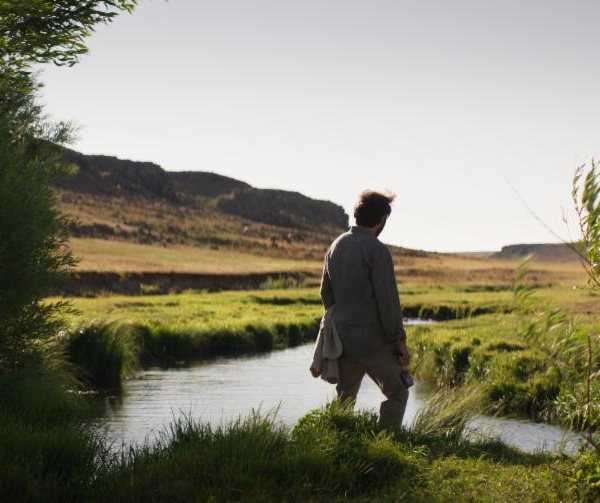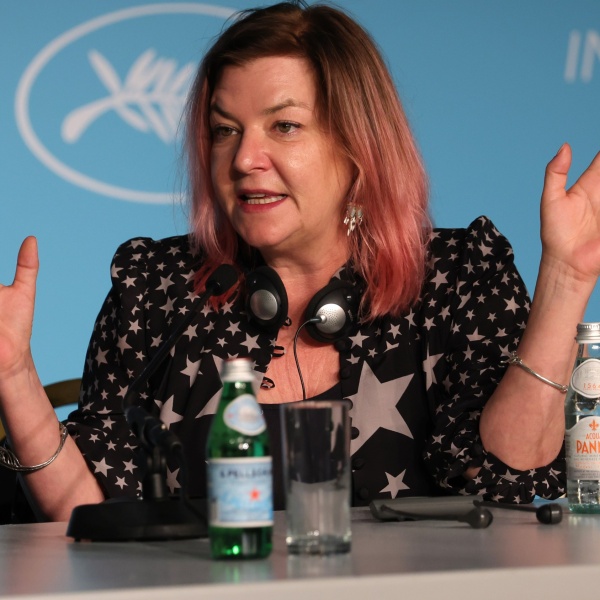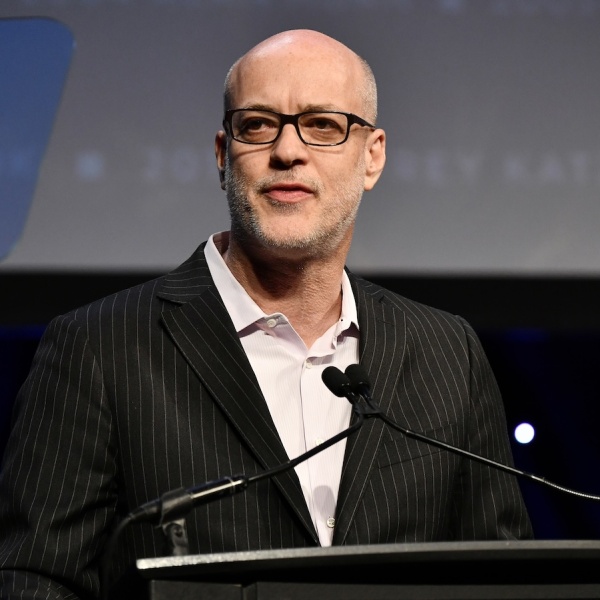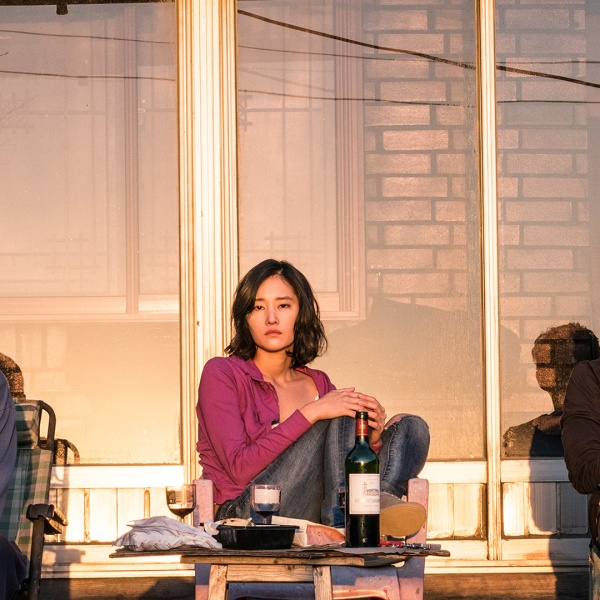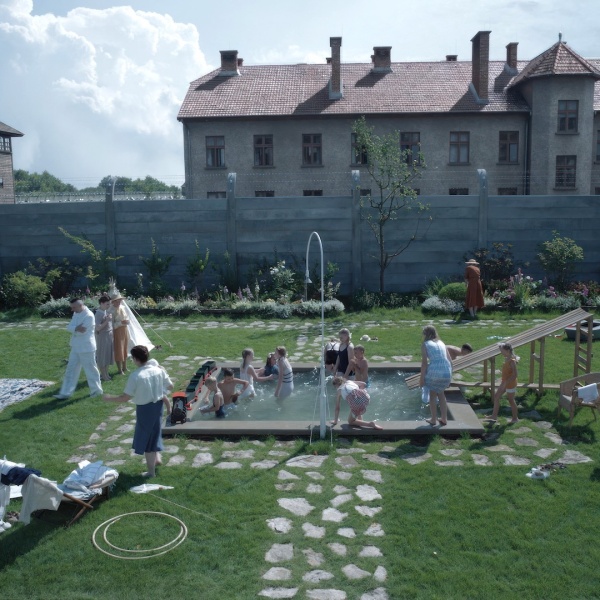
[Editor’s note: The following interview contains some spoilers for Martin Scorsese’s “Killers of the Flower Moon“ — and the factual events on which it is based.]
Actress Cara Jade Myers can’t quite recall when she first heard from a friend that Martin Scorsese was taking on “Killers of the Flower Moon” as his next project — sometime around 2018, she thinks — and she certainly couldn’t possibly foresee how the eventual film would change her entire life. And yet, something moved her all those years ago, and she “immediately” picked up the David Grann book from which Scorsese and screenwriter Eric Roth were pulling from for their fact-based American epic about the Osage Nation murders, read it quickly, and “was horrified at the fact that this has never been taught in history before.”
One of the very first people we meet in Grann’s book is Osage member Anna Brown, sister to the film’s central Osage figure, Mollie Burkhart (played in the film by Lily Gladstone). Grann opens his book in May 1921, three days into the real-life Brown’s disappearance from Gray Horse, Oklahoma, and with Mollie fearful of what has happened to her good time-loving sister. By the end of the first chapter, Anna is dead, but her story — and Myers’ path to playing her — was long from over.
By November of 2019, Scorsese and company — including casting director Rene Haynes, who headed up the indigenous and native casting needs for the film — were starting to cast the film. Myers was initially called to audition for the role of Reta, another one of Mollie and Anna’s sisters (the role eventually went to Myers’ friend JaNae Collins). “It’s a half a page audition, and I was stoked because I was like, ‘Oh my God, Martin Scorsese,’” Myers recalled during a recent interview with IndieWire. “I was freaking out. So I read that and sent in a self-tape, and then I got a call soon after. They’re like, ‘Oh, we want you to read for Anna.’ And the sides were a little bit longer. Perfect.’”
Myers also auditioned for the role of Mollie once, but said that once the casting team locked in on her for the role of Anna, that became her primary aim. The process grew protracted after the onset of the COVID-19 pandemic in March 2020, which put auditioning on hold for quite awhile (most of the film’s casting, including Myers, was officially announced a year later).
Once set for the part, Myers said she “tried to find as much information as she could” about the real Anna, “but, back then, Natives, they weren’t really documented,” she said. “The less Natives they could document, probably the better for them. There’s only so many materials that you can source from.”

What proved most helpful to Myers, who is a member of the Kiowa and Wichita tribes, was to visit the actual Osage Nation. “Talking to people and finding out the dynamics of how family works as an Osage person, and then remembering the books that I read, remembering the research that I’d done, and just the time period, all of that helped contribute to making Anna Anna,” she said. “I loved Anna. She’s incredibly full of life, but she’s also incredibly flawed.”
In both the book and the film, we learn what happened to Anna, both before and after her heinous murder, which is just as horrific in Scorsese’s film as it is in Grann’s book. But Myers, who is also a writer in addition to her acting work, had some notes for the character. Mostly, she had a personal attachment for her tragic arc, one she was eager to share with Scorsese. For Myers, the heartbreak of Anna’s life, the death of her sister Minnie (played in the film by Jillian Dion), that was the key to everything.
“One of my main concerns when I first talked to Marty, literally, the first thing I asked him about is the alcoholism,” the actress said. “I come from a family that has alcoholism. A couple of family members have passed away from alcoholism, and I know the effect. I know how alcoholism makes you unpredictable, and you’re not just drinking to drink. A lot of times, you’re drinking to numb something. You’re drinking to hide something, to not think about something. So I talked to him, and I’m like, ‘I want to anchor it in the fact that Minnie died, that her family’s dying, that her people around her are dying, but Minnie dying is what really set her off on this spiral.’”
When you see Anna on-screen before Minnie dies — at a high-spirited picnic, at church with her sisters — Myers reminds us, “She’s full of life. She’s happy. She’s right there. But then the next time you see her after Minnie passes, she’s a mess. I really wanted to root that in that and how much she loves her family.”
While Myers is an only child in real life, she found that bonding with her on-screen sisters was easy. She knew Collins beforehand, and slipped easily into sisterly rapport with both Gladstone and Dion. “We knew that we were going to be family, so I think we just came together and just started acting like family,” Myers said. “We had breakfast together. We’d go eat together. We’d go do things together. We’d have fun and gossip and just do things that girls do. I think that really helped create some bond with us.”

It was hard to shake. “The very first time I watched the [final] film, when Minnie died, I was just crying, and Jill’s sitting right next to me, and I’m crying,” Myers recalled. “Then, when Reta dies, I’m just crying, and JaNae’s sitting right next to me. The sisters’ deaths affected me so much, that even though they’re sitting next to me, it’s still so painful to watch.”
Myers has seen the film six times now, all with different friends and family members, and she notices more each time. “The first time I saw it, I was just taking everything in,” she said. “It was overwhelming. It was amazing. I loved to see the details that I know are specifically Osage. So, for me, that was amazing. But every time you watch it, you notice something different. I feel like [Robert] De Niro’s character gets more and more evil every time you watch it because you know he’s thinking about something and then what’s going to happen after.”
One of Myers’ first viewings was at the Cannes premiere in May. She loved the entire experience, she said, and can still, beat by beat, recall one of the wilder things to happen: hitting the red carpet with Scorsese, DeNiro, and Leonardo DiCaprio, leading to a number of quite charming photos of just the four of them.
“That photo with the guys was actually an accident, which is kind of funny, because as we were doing group photos, my heel started twisting or breaking, I’m not quite sure, but I couldn’t stand stable,” Myers said. “So De Niro was literally like, ‘Hold onto my arm,’ then we start going up these stairs, I’m holding onto him for dear life, and everybody’s like, ‘Oh, you’re so sweet to help him up the stairs,’ I’m like, ‘No, he’s helping me.’ Then Marty’s on his other arm, and he’s helping Marty. So we get to the middle part where they’re supposed to take the pictures, and I know they just wanted the three guys, but I’m like, ‘If I let go now, I will literally fall down these stairs.’ I was just, turn around, smile, and wave.”

De Niro did not let her fall. But, the second she ascended to the top of the stairs, she let go of the actor, turned to Collins: “And then,” she said with a laugh, “Thump, right on the ground. … I loved it! It’s such an iconic moment, especially for me, just because it’s something that you’re constantly working for your entire life and the fact that I was given this amazing opportunity to be in this movie and to be around these people and to learn from them, it’s just… I don’t know. It’s something that you’ll never forget.”
Not every viewing could be quite so memorable, but Myers said she’s always eager to see the film again, though she understands not everyone feels that way. Much like co-star Gladstone, she’s careful to prepare her loved ones for the experience. “When I talk to my friends and family about it, and especially other Native friends, I will be like, ‘Just so you know, it is a very triggering movie,’” she said. “Scorsese does not shy away from the death. He shows how brutal it can be and how people walk away and how discarded they were after. I had a mom reach out to me who said that she took her 15-year-old daughter to the movies, and when Henry Roan was shot, she turned to her mom and said, ‘Is that my great-grandpa?’ Yes, it was. For me, it’s so incredibly emotional and powerful because they’re not just characters on a screen. These are real-life people, and their descendants are watching this.”
Her dad still hasn’t watched it, likely because Myers has prepared him already for Anna’s death, which she rightly terms “very graphic.” “When I go with my friends, when that scene [in which we see Anna’s body] comes, I’ll feel my friends touching me. It’s very gruesome. It’s very jarring,” Myers said. “The day that I was filming the scene when Anna gets murdered, right before that, they were doing this scene where they are pulling the body out of the creek. It was a very, very tension-filled walk on the set when I came on, and people were touching my shoulder and stuff like that. It was traumatic for them to just see this happening, that when they saw me on set, it literally looked like people saw a ghost.”
When she was first coming up in Hollywood, Myers didn’t just take on acting gigs, including turns on “Rutherford Falls” and “This Is Us,” she was also behind the camera too, as both a production assistant and as part of the crafts services team. That’s shaped her attitude toward the on-screen work in invaluable ways.
“I actually loved working on crew side, on the other side of the camera, I think it helped tremendously because you get to see how the different departments work, how they work together,” Myers said. “And then I go in with an actor’s mindset, so I’m like, ‘OK, lighting, if they’re doing this, then how does that help with acting?’ It just gives me a better understanding of it.”
While Myers has been gaining recent attention for her work in “Killers of the Flower Moon,” she’s still cracking away on her writing (she and her writing partner have two scripts in the works right now, both of them “action thrillers” she’s excited to get back to now that the writer’s strike is over). That also fuels her acting.
“I think the thing that changed my acting the most is my writing,” she said. “It’s because, writers, you can’t get too specific. You can’t be like, ‘She smiles here.’ It made me realize that the script, as good as it is, it’s still incomplete, you’re the one who has to make the choices, you’re the one who has to really get in there and figure out what is the writer wanting to say.”
As an indigenous multi-hyphenate in Hollywood, Myers might sound unique to some, but she doesn’t need to look any further than her experience on “Killers of the Flower Moon” to dispel that notion. The production boasts prodigious Native and indigenous talent both in front of and behind the camera.
“The first time I’d ever seen Natives behind the camera on a professional set was when I did ‘Rutherford Falls,’ and I remember walking on that set and being like, ‘Oh, this is crazy. This is amazing,’” she said. “Then when you walk on Scorsese’s set, the fact that it’s on the Osage land, that there are so many Osage working behind the scenes, in front of the camera, that they were so incredibly opening and welcoming and so happy to share their stories with us and their customs and their cultures, it felt amazing. I’m like, ‘Why is every movie set not like this?,’ especially with Native projects.”
She’s not immune to criticisms that perhaps this Native project should have been helmed by a Native director, but she’s got some compelling perspective on that matter she’s eager to share.
“I have heard that: Should Marty be directing this?,” Myers said. “I think it’s very much like, at this stage in Native cinema, we need our allies, because the more people like Martin Scorsese who actually take the time to get to know the Osage, to go to the tribe and ask them if he can tell this story [is a good thing]. He started in 2017 going to the Osage Nation and learning their customs, their cultures, hearing their concerns. He did it the right way. But it is something where I’m excited that the more people that see us in these types of movies with these legends like Leo, De Niro, Scorsese, that they realize, ‘Oh, Native stories are just human stories.’ It shouldn’t be this novelty to see Native American life or Native Americans just living their life onscreen.”
For anyone looking for Native and indigenous talent, well, look no further than the cast and crew list for Scorsese’s film. There’s a wealth of actors, production designers, stunt people, and many more, all right there, all Scorsese vetted.
“I feel like I’ve heard so many times people use the excuse like, ‘Oh, I can’t find Native writers, I can’t find Native directors. I can’t find Native actors,’ and I’m like, ‘No, clearly you can. You just weren’t looking hard enough,’” she said. “I’m excited for people to start learning more about our traditions, about our culture, to see the different tribes as who they are, not just this giant monolith of all Native Americans. I am excited for us to just be part of stories, to where it’s not this novelty.”
And Myers, always ready to do the research, dive into the work, and speak up for her people, can give you more names if you’re struggling. They’re not rare, but they are special. Myers will be the first one to teach you some history, and maybe even something about the future.
“Native Hollywood, it feels like such a small community, and all of us kind of know each other,” Myers said. “It’s nice, because we can be like, “Oh, you don’t know a director? Let me talk to you about Sydney Freeland. Oh, you don’t know a writer? Let me point you to Tazbah Chavez.’ There’s so many people that we share each other. We’re constantly looking out for each other and trying to get more Natives on set and get to where people understand we’ve got these hopes, these dreams, these talents, just like everyone else does. We shouldn’t be rare.”
An Apple Studios and Paramount Pictures release, “Killers of the Flower Moon” is in theaters now.

